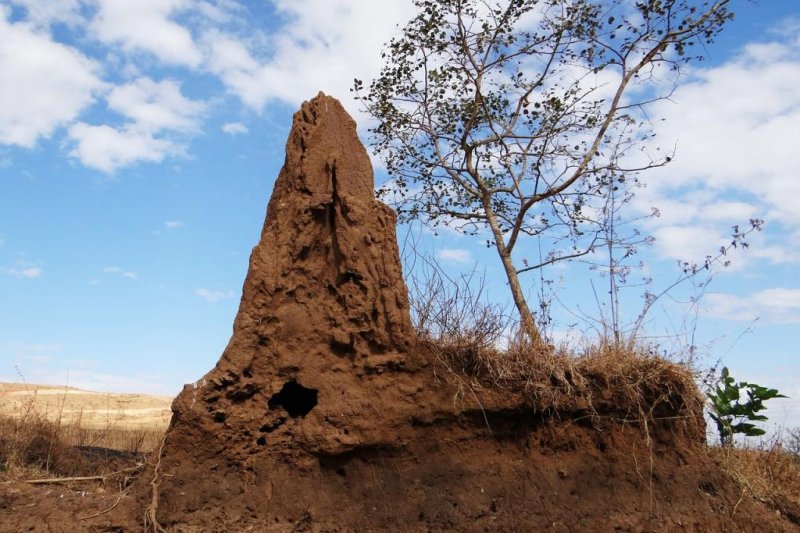Termites produce a sizable amount of methane, but microbes in termite mounds eat methane, limiting the amount of greenhouse gas that escapes into the atmosphere. Photo by
Pixabay/CC
Nov. 27 (UPI) -- Much attention is paid to the methane-producing flatulence of the globe's bovine population, but a new study proves termites fart too.
Some estimates suggest termites are responsible for between 1 and 3 percent of global methane emissions. But according to the latest research, roughly half of the greenhouse gas is filtered from the atmosphere by bacteria living inside termite mounds.
Like cows and other ruminants, termites rely on bacteria in their guts to help them break down plant material. One of the gaseous byproducts of the breakdown process is methane.
But in an effort to better understand the methane cycle within the termite's ecosystem, scientists found significant amounts of the methane produced by termites are captured by microbes living in the walls of termite mounds, as well as the underlying soil.
The microbes belong to a group of bacteria called methanotrophs. As their name implies, the microbes rely on methane as their main source of energy.
"They are in your garden soil, in your city soil, in the forest, they are even in agricultural soils," Stefan Arndt, professor at the University of Melbourne, said in a news release. "Logic would tell you there should be these methanotrophic bacteria also in the termite mounds, because they are everywhere."
Arndt and his colleagues were forced to develop special methods for measuring the methane cycle within termite mounds. Scientists needed to isolate three separate processes: methane production, transportation and consumption.
In many ecosystems, the three processes are easily delineated, but within the elaborate structures that are termite mounds, they're happening at the same time and place.
"In termite mounds it's a lot more complex. You don't know where the termites are, so you don't know where the production is at," said University of Melbourne researcher Philipp Nauer. "The other challenge is the structure of the mound itself. It's not a uniform structure, it has complex networks of chambers and channels and different porosities depending on where on the mound you look."
Using CT scans of old termite mounds, as well as photography of active mounds, scientists developed a 3D model to estimate the inner structures of mounds where scientists were monitoring methane emissions.
Researchers also injected methane -- attached to a tracer gas, argon -- into termite mounds and measured how much was emitted into the atmosphere. Scientists conducted the experiment on 23 mounds built by three different termite species. On average, half of the methane was intercepted by microbes living in the mounds.
Thanks to the new data, published this week in the journal PNAS, scientists can more accurately estimate termites' contribution to global methane emissions. Researchers can also use the new analysis to more accurately measure termite populations.
"Now with the methods that Dr. Nauer has developed and applied to these termite mounds, you get a really good idea about how many termites are actually inside," Arndt said. "So, you can look at seasonality of populations, and this is something that isn't well known. We don't really know that much about the ecology of these species, because they are really good at hiding."















